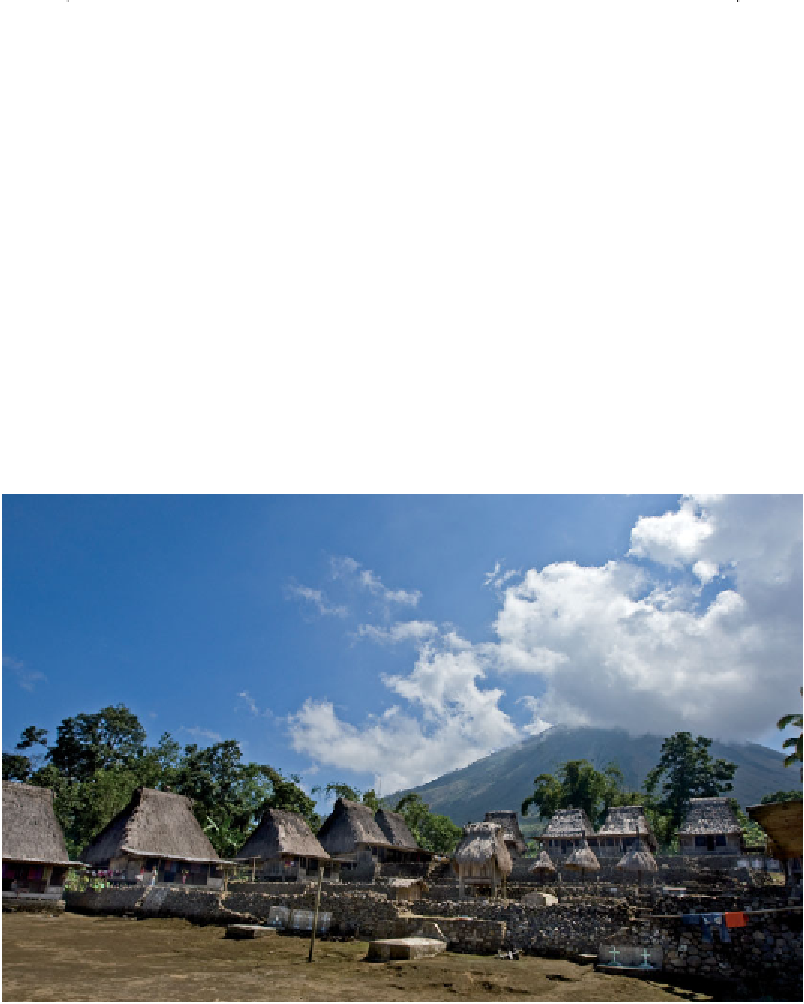Travel Reference
In-Depth Information
carved by shallow gullies cut through alternating layers of sandstone and vol-
canic deposits. The tools were found in sandstone strata near bones of extinct
elephant-like animals, pygmy
Stegodon
that were about the size of a cow.
The fi rst discoverers of the
Stegodon
bones were Soa tribespeople, who
traditionally burn of the area every March during hunts. In 1953 they col-
lected Stegodon bones that had been washed out of the deposits and pre-
sented them to the local Raja of Nagekeo. The Raja in turn alerted Theodor
Verhoeven, a Catholic priest and amateur archaeologist.
Verhoeven carried out excavations at Mata Menge in 1963. He discovered
the crude stone tools among the plentiful
Stegodon
bones, and attributed
them to
H. erectus
because they resembled tools that had been found associ-
ated with
H. erectus
bones on Java. But he was unable to date the tools con-
vincingly, and his papers about them were ignored.
Figure 131
The Ngada tribal village of Luba on Flores, more than 300 years old, is domi-
nated by the mildly active volcano Gunung Inerie. The shapes of the houses refl ect the shapes
of the dozens of volcanoes and cinder cones that dominate the lives of the people of Flores
in this geologically active part of the world.


